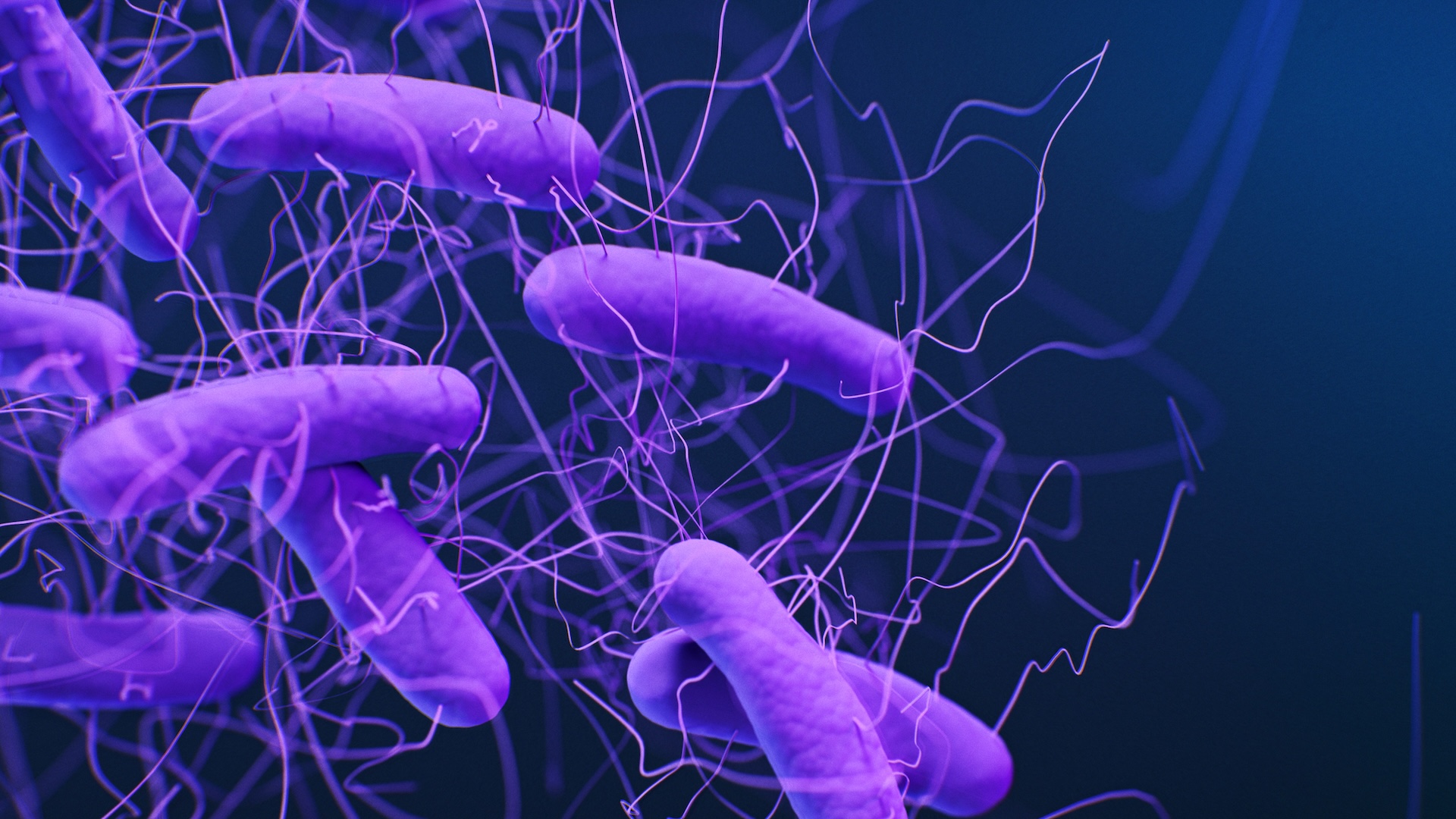For C. diff, antibiotic resistance comes at a cost
Researchers have identified two distinct mechanisms of drug resistance in C. difficile, but its ability to withstand antibiotics comes with downsides for the bacteria.

The superbug Clostridioides difficile, or C. diff, can cause dangerous gut infections. There are limited options for treating it, and patients often experience reinfection, which can be deadly. Now, a new study reveals that this dangerous bacterium can evolve antibiotic resistance quickly, although this resistance comes with tradeoffs.
The findings underscore the need for careful monitoring of the bacteria's resistance to antibiotics, particularly in hospitals, the study authors said.
In most people, beneficial bacteria living in the gut shield it from infection. When those bacteria die — for instance, as a result of antibiotic treatment for an unrelated infection — the large intestine becomes vulnerable, and this is often when C. difficile strikes. People who are taking or have recently taken antibiotics are up to 10 times more likely to contract C. difficile than those who have not. Other risk factors include staying in a hospital or care home, having a weakened immune system, or being very young or very old.
Related: Superbugs are on the rise. How can we prevent antibiotics from becoming obsolete?
Unfortunately, only three antibiotics are available to treat C. difficile infections. The drug of choice for most patients is vancomycin, but in about one-third of patients, their infection returns within a month after they've finished treatment. One possible reason for this, the study authors hypothesized, is that C. difficile is evolving to resist vancomycin.
"We don't know if there are resistant strains circulating and causing human infections because hospital labs don't test for resistance to vancomycin," study author Jessica Buddle, a doctoral student at the University of Sheffield in the U.K., told Live Science. "Around the world, there have been only a few reports of resistance. However, given the lack of testing, this likely isn't the whole story."
To find out whether the bacteria might be developing vancomycin resistance, the researchers genetically engineered two populations of C. difficile: one with a normal mutation rate and one that evolved more quickly. For the new study, published Aug. 15 in the journal PLOS Biology, they grew five strains of each population in the presence of increasing concentrations of vancomycin.
Sign up for the Live Science daily newsletter now
Get the world’s most fascinating discoveries delivered straight to your inbox.
Within four days, nine of the 10 strains had evolved resistance to vancomycin; by the end of the 60-day experiment, all 10 could grow in 32 times the amount of vancomycin normally used to treat C. difficile infections.
"Our findings highlight the need for vigilant monitoring of vancomycin resistance in UK hospitals," Buddle said in a statement. "Unchecked resistance could contribute to the large number of patients who have a relapsing infection after successful treatment with vancomycin."
The good news is that, although the bacteria used several different genetic mutations to escape vancomycin, all of the resistant strains had one thing in common: They couldn't grow as quickly as the C. difficile that had not evolved vancomycin resistance. In addition, several strains were smaller or struggled to produce the spores that the bacterium uses to survive and transmit itself in the environment.
"In this study, the resistance that C. difficile develops to vancomycin is self-defeating because it also seems to decrease the ability of the bacteria to survive in other ways," Dr. Paul Feuerstadt, a gastroenterologist and clinical professor of medicine at Yale School of Medicine in Connecticut, told Live Science in an email. This may be why high-level vancomycin resistance is not as common in C. difficile as in some other bacteria, he added.
Nonetheless, understanding and preventing antibiotic resistance are vital to keeping C. difficile infections treatable.
Knowing how C. difficile fights back against antibiotics allows scientists to design new treatments that are harder to resist, said Feuerstadt, who was not involved in the research. Knocking out infections quickly and effectively not only stops the bacteria from becoming resistant, but also means they can't survive long enough to evolve faster growth or better transmission.
"Catching an emerging resistance problem would mean we make the right choices in future treatment recommendations," Buddle said. "If we use the right drug for the infection and take the full course as prescribed, we increase the chances of successfully clearing the infection and reduce the risk of resistance. We need to treat antibiotics as a precious resource — and everyone has a part to play."

Michael Schubert is a veteran science and medicine communicator. He writes across all areas of the life sciences and medicine but specializes in the study of the very small — from the genes that make our bodies work to the chemicals that could support life on other planets. Mick holds graduate degrees in medical biochemistry and molecular biology. When he's not writing or editing, he is co-director of the Digital Communications Fellowship in Pathology; a professor of professional practice in academic writing at ThinkSpace Education; an inclusion and accessibility consultant; and (most importantly) dog-walker and ball-thrower extraordinaire.
Flu: Facts about seasonal influenza and bird flu
What is hantavirus? The rare but deadly respiratory illness spread by rodents










